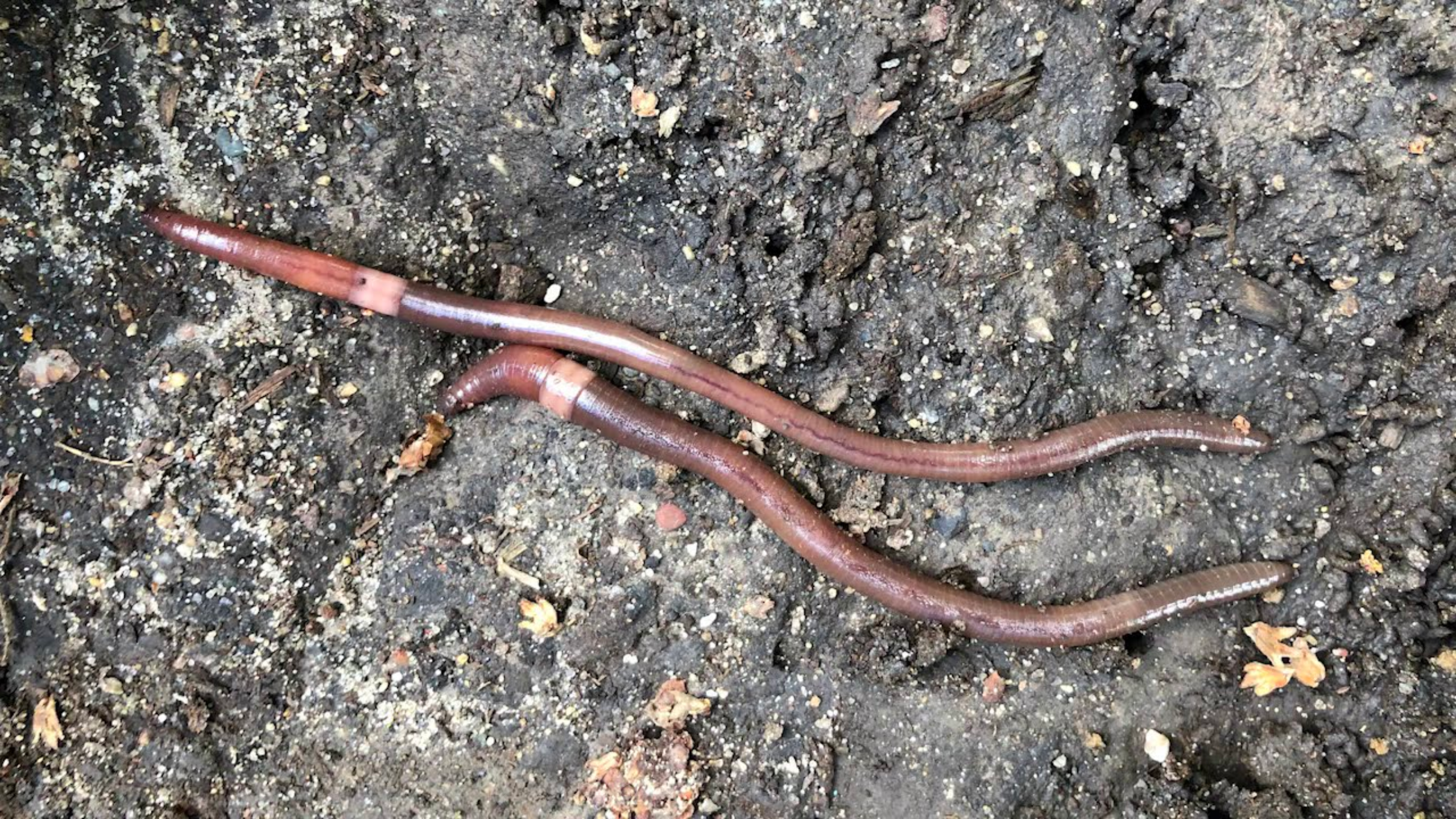Watch Out for this Garden-Killing Jumping Worm

(Photo: National Invasive Species Information Center)
We all know about the Spotted Lanternfly, the invasive species causing serious damage to trees, gardens and crops. But there’s a new kid on the block, and it’s a slippery one to catch.
The Asian Jumping Worm, also known as the Alabama Jumper, is an invasive species native to east-central Asia. The worm’s name stems from the fact that the species can flip themselves a foot off the ground, which is why they eat so much – they’re expending so much energy thrashing around. It’s suggested that these worms hitched a ride to the U.S. in potted plants around 1900. Their existence has gone unnoticed until the past decade after ecologists flagged them at problematic. Today, Jumping Worms are confirmed to be in 35 states across the country.
Jumping Worms are hungry for one thing – humus. No, not hummus. Humus, the rich, organic top layer of garden soil formed by decaying leaf litter, animals and insects. Without humus, plants quickly wilt and die.
“Asian Jumping Worms can eat all of it,” Sarah Farmer of the U.S. Forest Service says in a press release. “They are never satiated.”
How Do You Get Rid of A Jumping Worm?
Unfortunately, it’s tricky. Experts say the best way is to look for them in the soil, handpick them and place them in a plastic bag in the sun or in the trash. Cornell University’s Warren Cooperative Extension reports that a mustard mixture will bring adult Jumping Worms to the surface, therefore making it easier to snag them. The mixture won’t harm plants and is made up of a gallon of water, 1/3 cup of ground yellow mustard seed. Pour slowly into the soil and wait for the worms to surface.
To prevent the infection in your garden, be sure to use a reputable producer of mulch or compost that has been heat-treated to destroy the cocoons. When buying plants at your local gardening store, check the soil for worms first so you don’t bring home an infestation.
Will Jumping Worms Ever Go Away?
Right now, research is being conducted by the University of Wisconsin on several practices of eradicating this invasive species. It’s possible the solution is to use materials such as ground up charcoal and fossilized diatoms, but more research must be conducted to be sure.